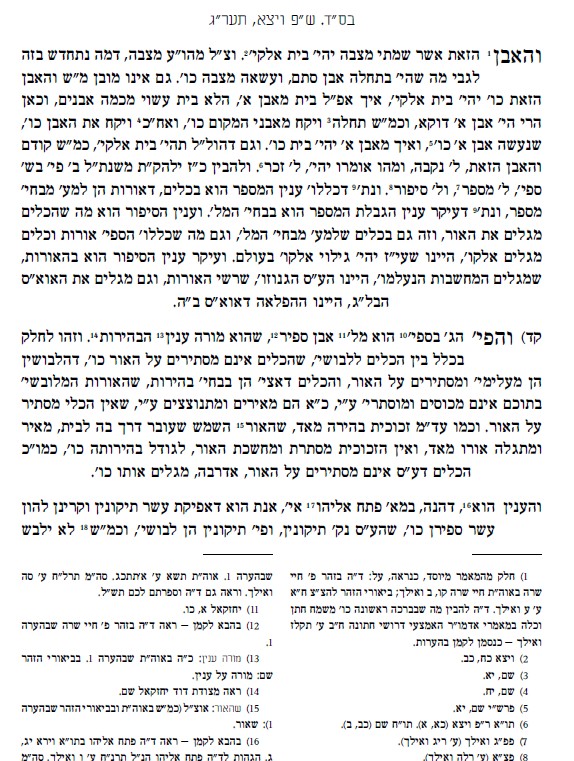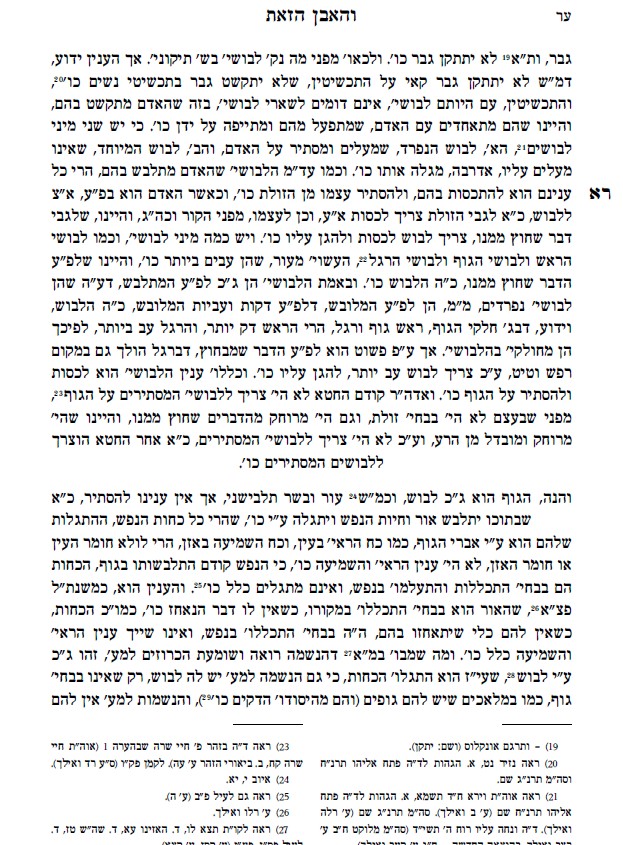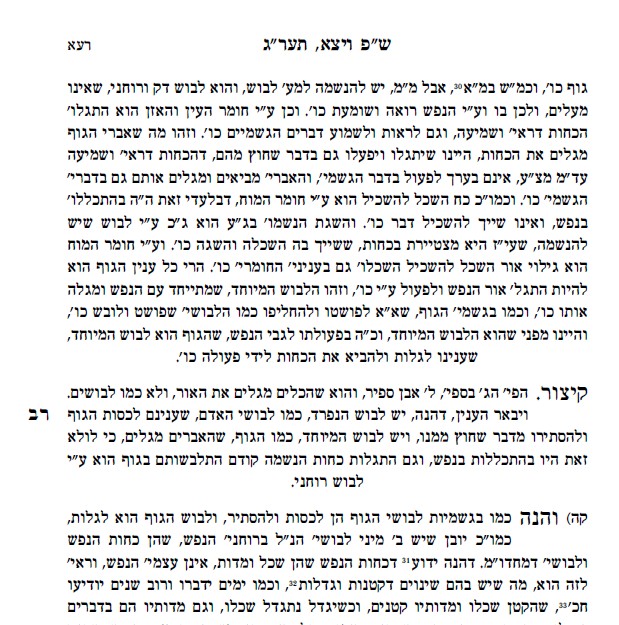AYIN BEIS | Existence Unplugged
Chapter 104: Sefirah Brightness – Containers and Garments (part 1)
Long Summary
The third interpretation of sefirah is from even sapir — a luminescent stone. This refers to the clear and transparent containers that reveal the brilliance of the energies, like a clear glass that allow the bright sunshine in without any concealment or covering.
We will understand this by distinguishing between containers and garments. Garments are concealers, due to outside forces — other people, to protect from the cold etc.
In Posach Eliyahu (Tikkueni Zohar) we read: “You are He who has brought forth ten ‘tikunim,’ and we call them ten Sefirot.” Tikunim are garments, but like ornaments, they are attached and reveal the entity en-clothed in them, unlike regular garments that are detached and conceal.
There are two types of garments: 1) Those that reveal – like jewelry, or the human body and its limbs which reveal the faculties. 2) Those that conceal and cover up. Adam did not need garments before the sin, because he was not on the level of the “outside,” and was completely removed and apart from the “outside.” After the sin he needed concealing garments to protect from the outside.
There are several types of outer garments, each commensurate to the part it covers, and to the forces it needs to protect from: garments of the head, the body and the legs. Shoes are made of leather to protect from the feet from the earth.
The former type of garments are inner garments, which are attached and reveal what is within. Like the human body, whose limbs and organs are the containers that draw out and reveal the soul’s faculties in manifest form (as discussed earlier ch. 2). Without the body’s container the soul’s faculties remain encompassed in the soul and cannot manifest. For example, without the physical eyes and ears the faculties of sight and sound will not function. Though the soul can see and hear spiritual sights and sounds (like the call from heaven), that too is through a subtle veil. But certainly the soul in a body below cannot express itself and function without the faculty’s containers, which also allow the soul to experience, see and hear, the physical.
Thus, the body is an attached garment, which cannot be detached from the soul (like a detached garment) — a garment that reveals the soul’s faculties, unlike the detached garments, which conceal.
Hebrew Text



Sources
The third interpretation in sefirah (from even sapir, brilliance), and its explanation in context of containers and garments is from Chayei Sarah 5566 (pp. 67. 76. 90. 95). Printed with additions in Ohr HaTorah Chayei Sarah 106b-107b; Biurei HaZohar pp. 70. The focus there is on sefirah from even sapir, but the Tzemech Tzedek in his gloss also addresses sefirah from the word mispar and sippur (see sources on ch. 87).
In the Mitteler Rebbe’s hanocha of the biur on Chayei Sarah (pp. 76) he specifically connects the garments with the curtains (parso’ot). See sources to ch. 107.
The difference between containers and garments discussed in this and the following chapters (104-106) is also based on the discourse of Posach Eliyahu, which was interestingly delivered on Vayeria 5566, a week before the above-mentioned Chayei Sarah discourse, indicating that the concept was part of an ongoing discussion during those weeks. The Posach Eliyahu discourse is printed in Torah Ohr Vayeira xxx. The Mitteler Rebbe’s version of the discourse is printed in Maamorei Admur HaZaken 5566 pp. xxx. Another version is in Maamorei Admur HaZakon Parshiyot pp. xxx. Glosses on this discourse, elaborating on this topic, can be found in: Ohr HaTorah Vayeira xxx. Hagohos to Posach Eliyahu 5658. See also Kol Ha’Nehene 5652. Tefilin D’Mari Alma 5653.
Analysis/Compendium
What is even sapir? Most think of it as a sapphire stone. The Tzemech Tzedek (a source for the discussion on even sapir) cites two interpretations for even sapir: 1) Radak — a white clear stone, “crystal or diamond,” 2) Even Ezra — a red stone (that could be a sapphire). [There are also clear sapphires, but most of them have a blue or red hue]. And he explains that the keilim of z”a are white and transparent (nehura chivra), because chesed is the dominating force there, and the keilim of malchus are reddish, because binyan ha’malchus is through gevurah (Biurei HaZohar p. 72. Ohr HaTorah Chayei Sarah 107b).

 Anchor
Anchor Breaker
Breaker Google Podcasts
Google Podcasts RadioPublic
RadioPublic Spotify
Spotify Pocket Casts
Pocket Casts